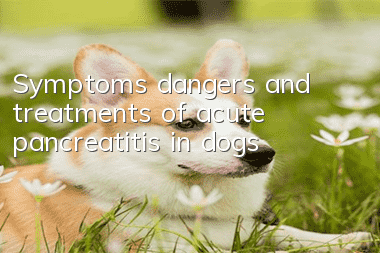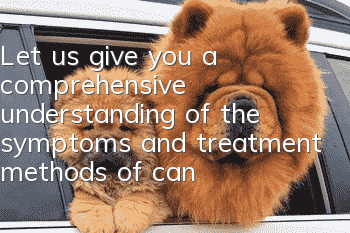Symptoms, dangers and treatments of acute pancreatitis in dogs

Acute pancreatitis is a disease caused by the autodigestion of trypsin due to various causes. The pancreas has an inflammatory reaction of edema, hemorrhage and even necrosis. Clinical symptoms include abdominal pain, bloating, nausea, vomiting, and fever. Laboratory tests show elevated levels of amylase in blood and urine.
Hazards:
Pancreatitis is a very serious disease, and acute hemorrhagic necrotizing pancreatitis is particularly dangerous, with rapid onset and high mortality. It is more common in dogs and cats that eat meat.
Symptoms:
Acute pancreatitis usually has no specific symptoms, most of which are acute vomiting, anorexia, depression, abdominal pain, and elevated body temperature.
Some sick animals have polyuria, bloody diarrhea, dehydration, polydipsia, shortness of breath, tachycardia and hepatomegaly.
Diagnosis:
Abdominal pain: Pain on the right side of the upper abdomen is palpated, mostly persistent, sometimes exacerbating in paroxysms. The abdominal pain worsens when eating or drinking, and the patient is in a praying posture.
Vomiting: Occurs at the beginning of the disease. The vomitus contains food, gastric juice, bile or gastric juice. Symptoms do not relieve after vomiting.
Increased body temperature: 20-40% of cases show polydipsia, shortness of breath, tachycardia, dehydration, hepatomegaly, and mucosal congestion.
Treatment:
1. It usually requires hospitalization and intravenous drip treatment. If the vomiting condition is severe, fasting is required.
2. If it is open pancreatitis (pulmonary fluid enters the abdominal cavity), surgical treatment is required.
3. Diet therapy: low-fat and highly digestible food should be fed, such as royal low-fat prescription food.
Prevention:
Pancreatitis is a common medical disease in dogs and cats. It mostly occurs in adult dogs and cats. It is mainly caused by unreasonable feed structure and excessive feeding of high-fat foods. Therefore, do not overfeed high-fat and high-protein feeds. This is to prevent The most important step in this disease.
- How to tell if a golden retriever puppy is pure
- Xiaoxiao, where did canine distemper come from?
- Causes of pancreatitis in dogs
- Can't stand the shedding season? 50,000+ customers choose this nutritional product as the "out of stock king"
- Can pet dogs be infected with coronavirus? Here’s the truth!
- The dog can't open his eyes and is half-closed
- What should I do if my puppy’s eyes are watery and heavily stained with tears?
- How to train a 6-month-old Golden Retriever? How to train a Golden Retriever!
- Symptoms and treatments for long bone spurs in dogs’ lumbar vertebrae
- French Bulldog Characteristics



